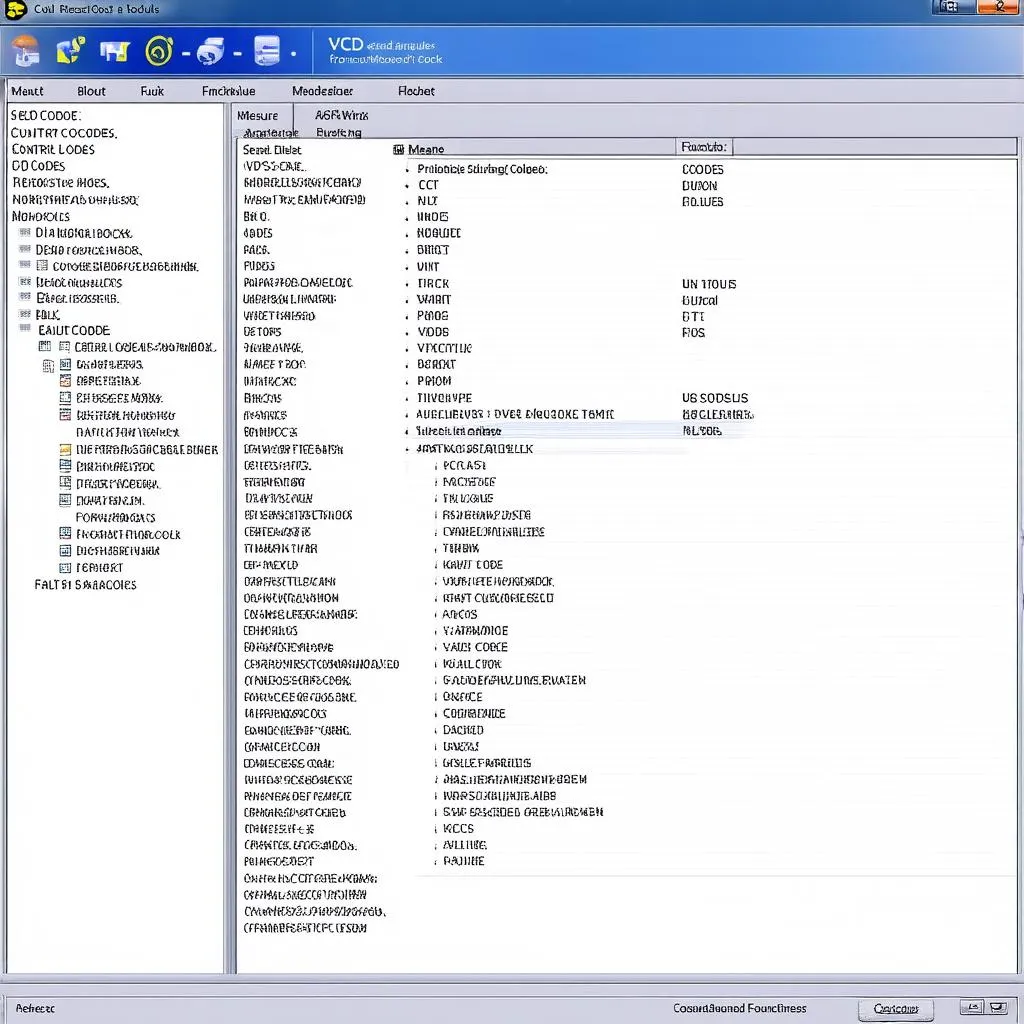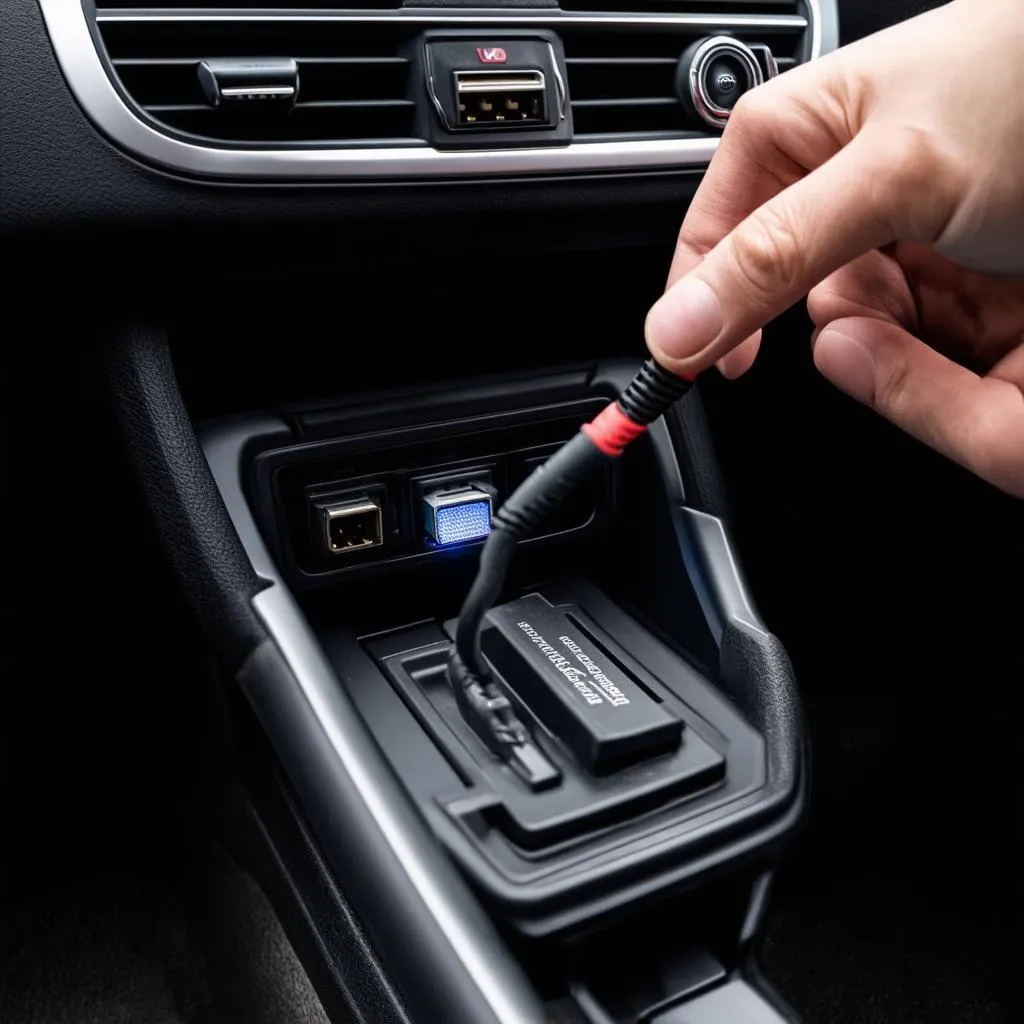The Jetta GLI 2019, a car celebrated for its blend of performance and practicality, is also known for its embrace of technology. One such technological marvel is its compatibility with VCDS (VAG-COM Diagnostic System), a powerful diagnostic and customization tool. This guide delves into the intricacies of using VCDS on your Jetta GLI 2019, empowering you to unlock its full potential.
Understanding VCDS and its Benefits
VCDS, often referred to as VAG-COM, is a Windows-based software that interfaces with your Jetta’s onboard computer systems. Unlike generic OBD-II scanners, VCDS offers a depth of access that’s unmatched, allowing you to:
- Diagnose Faults: Pinpoint issues with unparalleled accuracy, going beyond basic trouble codes to identify the root cause.
- Customize Settings: Tailor your car’s behavior to your preferences, from adjusting lighting options to fine-tuning throttle response.
- Activate Hidden Features: Unleash features that are often dormant in factory settings, enhancing your driving experience.
Getting Started with VCDS on Your Jetta GLI 2019
Prerequisites:
- VCDS Software: Ensure you have a licensed copy of the VCDS software. Reputable sources like Cardiagtech offer genuine versions that guarantee compatibility and functionality.
- VCDS Interface Cable: This cable acts as the bridge between your computer and your car’s OBD-II port. Choose a reliable cable that supports your Jetta’s model year.
- Windows Laptop: VCDS is designed for Windows operating systems. A laptop provides the portability and ease of use needed for in-car diagnostics.
Connecting and Communicating:
- Locate OBD-II Port: Typically found beneath the driver’s side dashboard, the OBD-II port is your gateway to your car’s systems.
- Connect Interface Cable: Plug one end of the VCDS cable into your laptop’s USB port and the other end into the OBD-II port.
- Power Up: Turn on your Jetta’s ignition but refrain from starting the engine. This powers up the onboard computer systems.
- Launch VCDS Software: Initiate the VCDS software on your laptop. It should automatically detect and establish communication with your Jetta GLI 2019.
Navigating the VCDS Interface
Upon successful connection, you’ll be greeted by the VCDS main menu, your command center for exploration and customization. Here’s a breakdown of key sections:
1. Select Control Module
This section grants access to the various control modules that govern your car’s functions. For instance, selecting “Engine” delves into engine-related settings and diagnostics.
2. Fault Codes
Here, you can scan for, read, and clear fault codes. VCDS provides detailed descriptions of each code, aiding in pinpointing the issue.
3. Measuring Blocks
Real-time data streams for various sensors and systems can be accessed here. This is invaluable for analyzing live performance and identifying anomalies.
4. Advanced Functions
This section houses specialized procedures, like adaptations, basic settings, and coding, enabling you to delve deeper into your car’s configuration.
 VCDS Interface Screenshot
VCDS Interface Screenshot
Common Use Cases for VCDS on a Jetta GLI 2019
- Enabling Lap Timer: Unleash your inner racer by activating the lap timer function in the instrument cluster, recording your track day exploits.
- Adjusting Lighting Behavior: Customize the coming-home and leaving-home light duration, adding a touch of personalization to your arrival and departure.
- Tweaking Throttle Response: Fine-tune the throttle response curve for a more responsive or relaxed driving experience.
- Enabling Battery Monitoring: Activate battery monitoring to keep a watchful eye on your battery’s health and performance.
Expert Insight: “The level of customization VCDS offers is remarkable,” says automotive electronics specialist Dr. Emily Carter, author of “Modern Automotive Electronics Demystified.” “It empowers owners to truly tailor their vehicles to their individual needs and preferences.”
Important Considerations
- Proceed with Caution: While VCDS is a powerful tool, it’s crucial to tread carefully. Altering certain settings without proper understanding can have unintended consequences. Thoroughly research any changes before implementing them.
- Backup Existing Settings: Before making any modifications, back up your existing settings. This allows you to revert to the previous configuration if needed.
- Seek Professional Guidance: If unsure about a particular setting or procedure, don’t hesitate to consult a qualified automotive electrician or a reputable VCDS forum.
Frequently Asked Questions
Q: Is using VCDS safe for my car?
A: When used responsibly and with proper understanding, VCDS is safe. However, making uninformed changes can potentially lead to issues.
Q: Can I update my Jetta GLI’s software using VCDS?
A: While VCDS doesn’t facilitate full software updates, it can perform certain software-related functions like control module coding and adaptations.
Q: Where can I find reliable VCDS support and resources?
A: Online forums dedicated to VCDS and reputable automotive diagnostic communities are excellent sources of information and guidance.
Q: Does Cardiagtech offer support for using VCDS?
A: While Cardiagtech specializes in providing genuine VCDS software and hardware, they may also offer resources and links to support channels.
 Jetta GLI OBD2 Port
Jetta GLI OBD2 Port
Conclusion
VCDS empowers Jetta GLI 2019 owners with a deep dive into their car’s systems, offering a level of control and customization that surpasses conventional diagnostic tools. From diagnosing faults to unlocking hidden features, the possibilities are vast. However, responsible use and thorough research are paramount. If you’re looking for the genuine VCDS software and compatible hardware, consider exploring the offerings at CARDIAGTECH. For personalized guidance and expert advice on unleashing the full potential of your Jetta GLI 2019 with VCDS, connect with the knowledgeable team at CARDIAGTECH.

